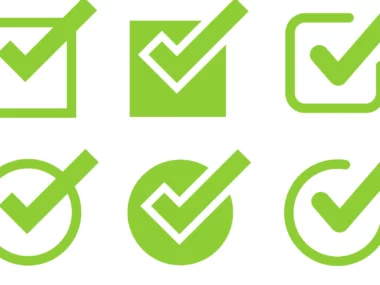Getting a loan can be a great way to finance a big purchase or consolidate debt. However, the process of getting a loan can be confusing and overwhelming, especially if you’re not familiar with the different types of loans and lenders available in Australia.
In this article, we’ll provide you with a step-by-step guide on how to get a loan in Australia. We’ll cover everything from checking your credit score to choosing a lender and applying for the loan.
By the end of this article, you’ll have a better understanding of what it takes to get a loan in Australia and how to make the process as smooth as possible.
Types of Loans in Australia
Australia offers a diverse range of loan options catering to various needs. Let’s explore some of the common types:
- Personal loans: These unsecured loans serve multiple purposes, such as debt consolidation, home renovations, or travel. As they lack collateral, personal loans generally entail higher interest rates compared to secured loans.
- Car loans: Secured car loans are specifically designed for purchasing vehicles. The car itself acts as collateral, granting the lender the right to repossess it in case of loan default.
- Home loans: Secured home loans facilitate property purchases, including homes and investment properties. Australia offers variable rate loans, fixed rate loans, and split rate loans, providing borrowers with a variety of options.
- Business loans: Business loans cater to financing business ventures and startups. They can be secured or unsecured, and some lenders may require a personal guarantee from the borrower.
- Payday loans: Intended for short-term needs, payday loans must be repaid by the next payday. It’s important to note that they typically come with high interest rates and fees, making them a last-resort option.
- Student loans: Student loans assist in covering educational expenses like tuition fees and textbooks. These loans often feature lower interest rates compared to other types and may offer flexible repayment terms.
- Debt consolidation loans: These loans streamline multiple debts into a single loan with a lower interest rate. This aids in better debt management and reducing overall interest payments.
It’s essential to understand that each loan type has specific requirements and eligibility criteria. For accurate and detailed information, it’s advisable to directly consult with lenders regarding their individual requirements.
Types of Lenders in Australia
In Australia, you have various types of lenders to choose from. Let’s explore some of the common ones:
Banks: Banks are widely available and offer a comprehensive range of loan products, such as personal loans, car loans, home loans, and business loans. They are familiar institutions with established services.
Credit unions: Credit unions are member-owned financial institutions that operate on a not-for-profit basis. They provide similar loan products as banks but may offer lower interest rates and fees. Credit unions prioritize the needs of their members.
Online lenders: Online lenders are gaining popularity in Australia. They offer convenience and accessibility, providing personal loans, car loans, and home loans online. Online lenders often have faster approval processes and may offer more flexible repayment options compared to traditional lenders.
Peer-to-peer lenders: Peer-to-peer lenders connect borrowers with individual investors who are willing to lend money. They offer personal loans and business loans, creating a platform for individuals to lend and borrow from each other. This alternative lending method can offer unique opportunities.
Payday lenders: Payday lenders specialize in short-term loans intended to be repaid on your next payday. However, it’s crucial to approach them with caution due to their high interest rates and fees. It’s advisable to consider payday loans as a last resort when facing urgent financial needs.
When selecting a lender, it’s vital to take into account several factors, including interest rates, fees, repayment terms, and customer service. Additionally, review the lender’s eligibility criteria to ensure you meet their requirements.
By considering these aspects, you can make an informed decision and choose a lender that aligns with your needs and financial circumstances.
Waiting for Loan Approval in Australia
Waiting for approval can be a stressful time, especially if you need the funds urgently. The amount of time it takes to get approved for a loan can vary depending on the lender and the type of loan you’re applying for. For example, some lenders may be able to approve your loan application within a few hours, while others may take several days or even weeks.
The approval process typically involves a credit check and an assessment of your income and expenses to determine whether you can afford to repay the loan. To speed up the approval process, it’s important to provide all the necessary documentation and information upfront.
This may include proof of income, bank statements, and identification documents. If you’re waiting for approval and need the funds urgently, you may want to consider applying for a loan with a lender that offers fast approval times. However, it’s important to remember that fast approval times may come with higher interest rates and fees.
Conclusion
In conclusion, there are many different types of loans and lenders available in Australia. When choosing a loan or lender, it’s important to consider factors such as interest rates, fees, repayment terms, and customer service.
You should also check the lender’s eligibility criteria to make sure you meet their requirements. Some additional tips and advice to keep in mind when applying for a loan include:
1. Check your credit score before applying for a loan. A good credit score can increase your chances of getting approved and may also help you get a better interest rate.
2. Shop around and compare different lenders to find the best deal. Don’t just go with the first lender you come across.
3. Read the fine print carefully before signing any loan agreements. Make sure you understand all the terms and conditions of the loan.
4. Consider using a loan calculator to work out how much you can afford to borrow and what your repayments will be.
5. Don’t borrow more than you can afford to repay. This can lead to financial stress and may damage your credit score.
I hope this article has been helpful!






